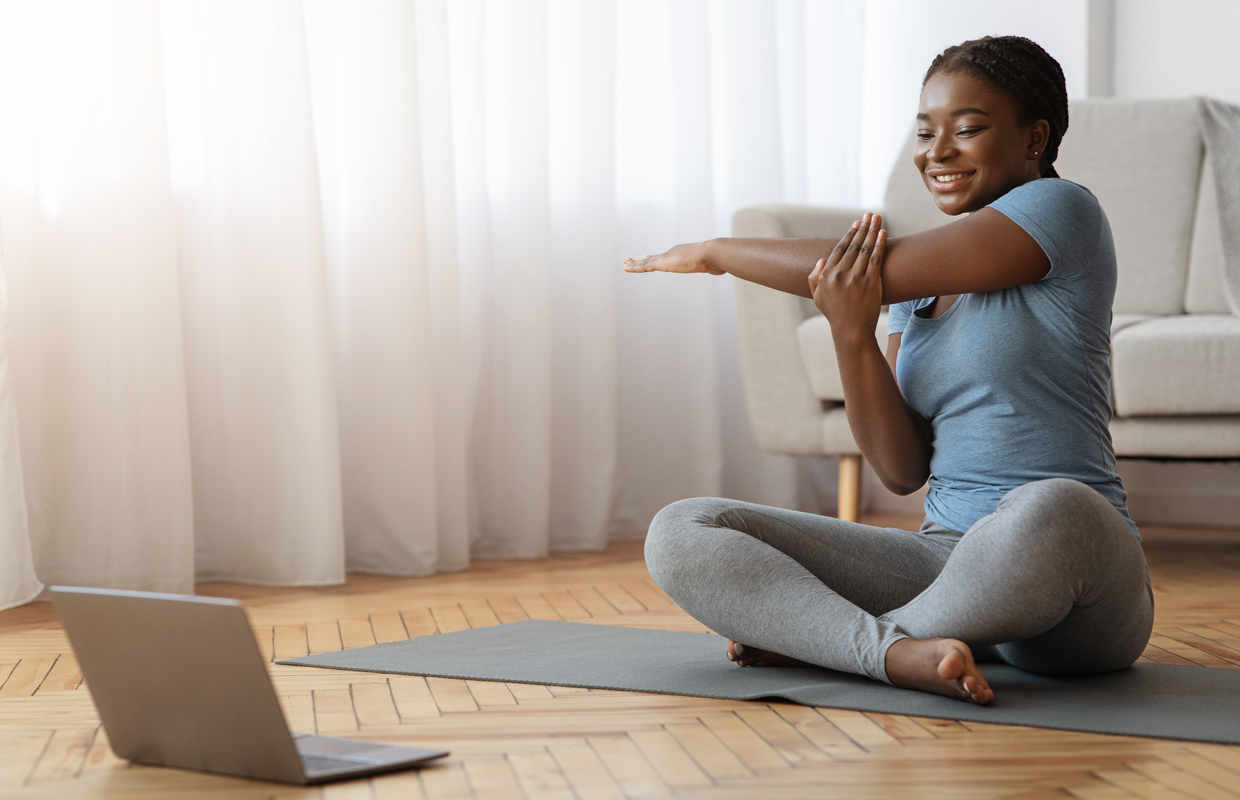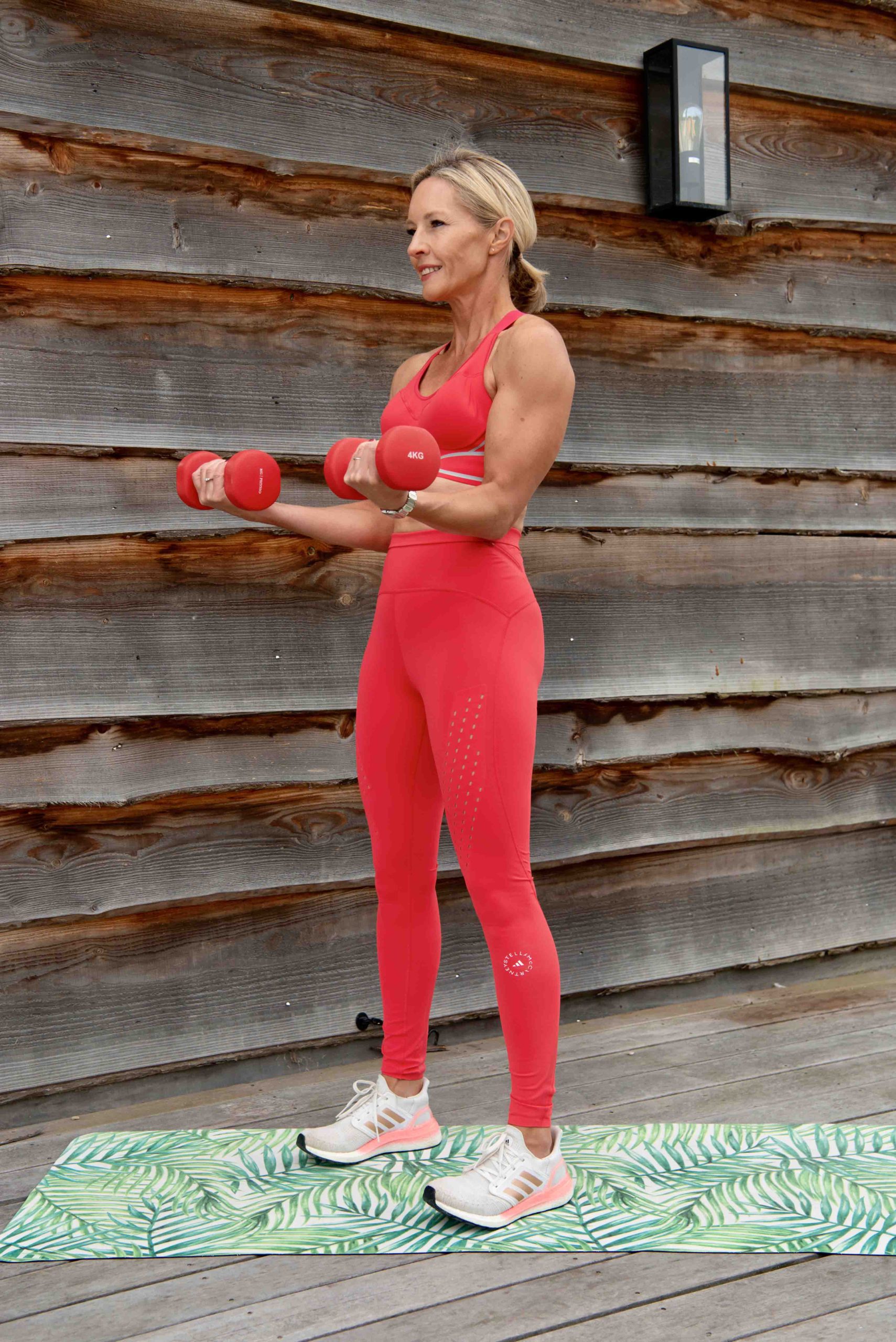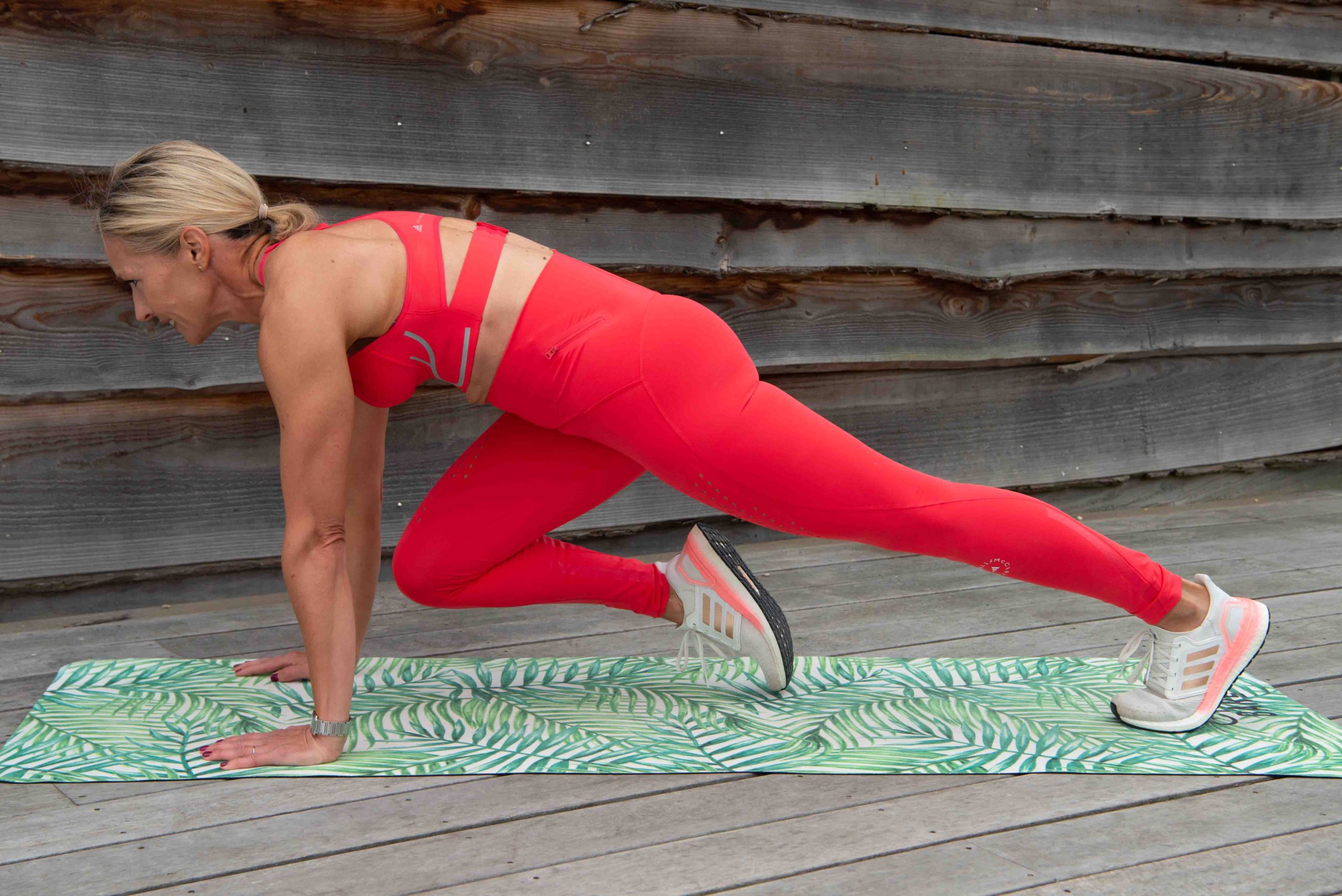Today is World Osteoporosis Day. Did you know, approximately 80% of all osteoporosis cases occur in women? Luckily, there are certain lifestyle changes you can make to lower your risk…
World Osteoporosis Day aims to raise awareness around the risks and prevention of the condition. You can significantly reduce your risk of osteoporosis through diet and lifestyle changes, as well as through regular exercise. Scroll down for a strength training workout designed to boost bone health!
What is osteoporosis?
Osteoporosis is a condition that causes bones to become weak and fragile. As a result, bones can break incredibly easily – even as a result of a minor fall, a sneeze, or even a sudden, jerky movement. What’s more, fractures caused by osteoporosis can be life-threatening and a major cause of pain and long-term disability.
Worldwide, one in three women aged 50 years and over will suffer an osteoporotic fracture.
Am I at risk of osteoporosis?
While your risk increases as you get older, osteoporosis can occur at any age, regardless of health history, and the condition is more common in women than men. There are also certain factors that can further increase your risk. This includes if you:
- had a previous fracture
- have a family history of osteoporosis
- take specific medications that affect bone health
- have reached the menopause
Personal trainer and founder of Caroline’s Circuits, Caroline Idiens adds: ‘As we age, our bone density naturally decreases along with our muscle mass. This can leave us more susceptible to fractures and the risk of osteoporosis. It is more prevalent in women especially after the menopause, as estrogen levels decrease.’
Click here to check your osteoporosis risk.

How can I protect my bones and prevent osteoporosis?
According to International Osteoporosis Foundation, there are a number of things you can do to prevent the condition and look after your bones. This includes:
NUTRITION
Ensure your diet is rich in bone-healthy nutrients. Calcium, vitamin D and protein are the most important for bone health. Safe exposure to sunshine will help you get enough vitamin D.
LIFESTYLE
Avoid negative lifestyle habits. Maintain a healthy body weight, avoid smoking and excessive drinking.
TESTING & TREATMENT
Get tested and treated if needed. If you’re at high risk you will likely need medication and lifestyle changes to help protect yourself against fractures.
EXERCISE
Regular exercise is essential for bone health, as it keeps the bones and muscles moving. In particular, strength training is best.
Caroline adds: ‘As bone density and muscle mass decrease, it is imperative that we lay down new bone tissue – this is where strength training comes in.
‘When we use weights or our own bodyweight, the stress we cause by pulling and tugging on the bones in turn stimulates new growth.
‘The result is stronger, denser bones. As little as 30 minutes of activity 3 times a week has shown to make a marked difference in our bone cell growth.’
For simple equipment-free strength training exercises, Caroline recommends trying hill/stair walking, skipping, dancing or jogging. Or, why not try Caroline’s exclusive strength-training workout for stronger bones…

Take some time to mobilise your joints and warm up your muscles before starting this workout.
Strength-training workout for bone health
To mark World Osteoporosis Day, Caroline has created an exclusive 30-minute strength training workout, designed to improve bone health.
‘As a strength training coach I focus on creating workouts which really focus on this area of health, both by using weights and without. The workout below can be completed at home with little equipment (or just using bodyweight for resistance) and is suitable for all fitness levels.
‘As well as being instrumental to our bone health, strength training also helps us to build on our muscle mass. This can improve our overall balance, reducing the risk of falls and injury. Not forgetting the huge mood boost that accompanies it, too!’
How to do this workout:
Warm-up before getting started, then perform 2 or 3 sets of the 10 exercises. Remember to cool down at the end!
- Beginner – 30 seconds on, 30 seconds rest
- Intermediate – 40 seconds on, 20 seconds rest
- Advanced – 50 seconds on, 10 seconds rest.
1. Sumo Squats

- Stand with your feet wider than shoulder width apart holding the weights in front of your chest together.
- Slowly sit back as if into a chair, keeping knees tracking over the toes and back straight, chest lifted.
- When you are at 90 degrees with the floor slowly drive back up squeezing your glutes as you do so.
- Build up gradually, you do not have to go too low to start with. The key is to keep the knees out and do not round your shoulders or arch your back.
2. Skaters

- The skater is a lateral jump where you power the body from one side to the other landing in a squat position (single leg squat) as you perform the skating motion.
- Arms alternate as you explode off of one foot and switch sides.
- If you wish to do a lower impact movement you can step from side to side instead of jumping.
3. Push Ups

- You can start a push up on your knees or on your toes (or against a wall too). Take your hands a little wider than shoulder-width apart on your mat.
- Slowly bring your chest towards the floor ensuring your elbows are about a 45 degree angle to your body and your back is completely straight with your head in line with your spine.
- Come forward over your hands and when your chest comes to the point you are comfortable then push back upwards, keeping your core engaged and all in one fluid movement. Build up gradually.
- If you are doing a full push up, start in a high plank position and again lower yourself slowly to the floor.
4. Bicep curls

- Stand holding a dumbbell in each hand with your arms hanging by your sides. Ensure your elbows are close to the side of your body with your palms facing forward.
- Keeping your upper body stationary exhale as you curl the weights up to shoulder level while contracting your biceps, taking care not to lean back or swing your arms. Keep your core engaged throughout.
- Once you reach the top slowly lower the arms for the second rep.
5. Reverse Lunges with knee drive – both legs

- Start by standing with feet shoulder width apart, shoulders back and chest lifted.
- Slowly take a big stride backwards bending the back knee to 90 degrees to the floor and keeping the front knee strong without caving in as you do so.
- Power yourself back to standing and swap legs.
- If you want an extra challenge bring the back knee into a forward crunch as you bring the leg back to standing to engage the core. Make sure you keep upright throughout and if you wish for extra resistance you could hold weights too.
6. Mountain Climbers

- Begin in a plank position, shoulders over wrists, core engaged and with a straight back.
- Bring one knee then the other towards your chest alternately and keep switching legs, picking up the pace if you feel able and keeping the hips down.
7. Tricep extensions

- Stand in a semi lunge position with one knee forward and bent, hinging at the hip and with a dumbbell in one hand.
- Tuck your upper arm close to your torso and slowly extend that arm fully backwards to lift the weight up.
- As you do so you contract the tricep at the top, pause then return to the start. Take care not to swing the arm and keep the back straight throughout.
- Once you have completed all the reps on this side, swap sides.
8. Jump Squats (or static squats for low impact)

- Standing with your feet wider than shoulder width apart, send the hips back as you squat, tapping the floor in the middle with your hands and then explosively jump back, landing with soft knees.
- If you would rather not jump, keep to static squats. Ensure you keep looking forwards and your back is straight throughout.
9. Shoulder Press

- Standing with your feet shoulder width apart, hold both dumbbells at a 90 degree angle at shoulder height.
- As you exhale press the weights above your head without touching them at the top. Keep looking forward.
- Return to the start position slowly and keep the elbows still at shoulder height before you repeat the exercise. Try not to lean back; tuck the bottom under and engage your abs. You can also do this seated or kneeling.
10. Plank Hold

- Begin in the full plank position shoulders over wrists and keeping your back straight and your body in a straight line from your ears to your toes.
- Hold this position while engaging your abdominals and without raising your hips. Build up slowly!
Having qualified as a Personal Trainer in 2001, Caroline has spent 20 years working directly with clients one on one or with group exercise classes and 2020 saw her launch Caroline’s Circuits, an online membership fitness platform offering live 30 minute workouts focussed on strength training. Visit carolinescircuits.com, or follow her on Instagram @carolinescircuits.







